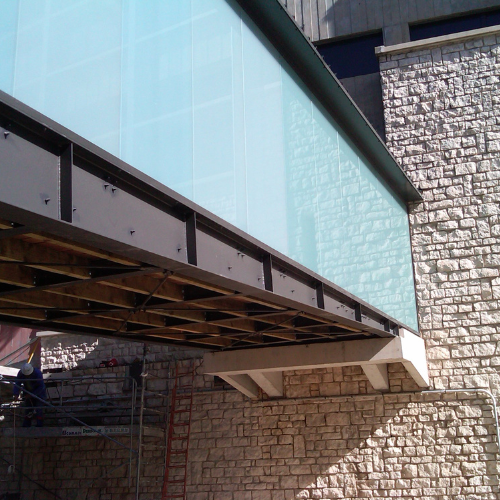Glass has become an integral part of modern architecture, thanks to its unique ability to provide transparency, natural light, and an aesthetic appeal. Glass is a versatile material that can be used for various purposes in building design, such as windows, skylights, facades, and even load-bearing structures.
In this blog post, we have explored the history of glass, the manufacturing process of glass, different types of glass, safety glass, energy-efficient glass, structural glass, colored glass, films, tints, and the future of glass in architecture.
History
Throughout history, glass has played a significant role in architecture, from the stained glass windows of Gothic cathedrals to the towering glass skyscrapers of modern cities. The manufacturing process of glass has evolved over the centuries, with new materials and techniques being introduced to create stronger, more durable, and energy-efficient glass. The different types of glass available today include float glass, annealed glass, tempered glass, and laminated glass, each with its unique properties and uses.
Types of Glass in Architecture
Safety glass, such as tempered and laminated glass, is an essential component of modern architecture, designed to reduce the risk of injury in the event of breakage. Energy-efficient glass, such as double-pane windows and argon-filled glass, is also increasingly popular, helping to reduce energy consumption and costs by limiting heat transfer through windows. Solar heat gain coefficients (SHGC) is an essential factor to consider when selecting energy-efficient glass.
Structural glass is another type of glass that is becoming increasingly popular in modern architecture. Designed to support the weight of the building, structural glass is used in applications such as floors, roofs, and walls, and can be made from tempered or laminated glass, meeting strict safety standards to ensure its strength and durability.
Colored glass, films, and tints are used to add a decorative or functional element to glass in building design. They can be used to provide privacy, reduce glare, or add an aesthetic appeal to the building.
The use of glass in construction and architecture has been a growing trend in recent years and is expected to continue in the future. Advancements in glass technology have made it possible to create larger and more durable glass panels, opening up new possibilities for architects and builders.
One major advantage of using glass in construction is its ability to let natural light into buildings. This can help reduce energy costs by lowering the need for artificial lighting and heating. Additionally, the transparency of glass can provide stunning views of the surrounding environment, which can enhance the overall aesthetic appeal of a building.
Conclusion
Glass has become an integral part of modern architecture, offering transparency, natural light, and an aesthetic appeal. From the ancient Egyptian glassmaking techniques to the advanced energy-efficient and structural glass products of today, glass has undergone a significant evolution, making it an essential component of building design. The future of glass in architecture is bright, with even more innovative and sustainable products being developed to meet the growing demand for energy-efficient and environmentally friendly building solutions.
Additional Resources to read:
https://constrofacilitator.com/importance-of-glass-in-architecture-design/
https://www.planndesign.com/articles/2747-importance-glass-architecture-design




